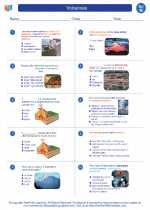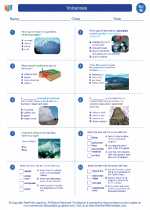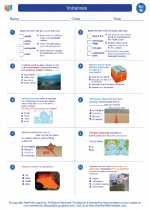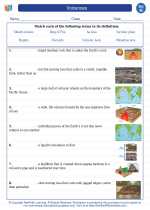What are Shield Volcanoes?
Shield volcanoes are a type of volcano with a broad, gently sloping cone formed by the eruption of highly fluid basaltic lava. They are named for their resemblance to a warrior's shield lying on the ground.
Formation of Shield Volcanoes
Shield volcanoes are formed by the accumulation of low-viscosity basaltic lava flows, which can travel long distances from the vent before solidifying. The lava flows out in all directions from the central vent, creating a broad, shield-shaped structure.
Characteristics of Shield Volcanoes
- Gentle Slopes: Shield volcanoes have gentle slopes due to the low viscosity of the basaltic lava, which allows it to flow easily and create a wide base.
- Large Size: These volcanoes can be massive in size, with some reaching tens of kilometers in diameter.
- Lava Flows: The primary activity of shield volcanoes is the eruption of fluid lava, which forms extensive lava flows.
- Lack of Explosive Eruptions: Shield volcanoes typically have non-explosive eruptions, as the low viscosity of the lava allows gases to escape easily.
- Location: They are commonly found in areas of hot spot activity, such as the Hawaiian Islands.
Study Guide
When studying shield volcanoes, it's important to focus on the following key points:
- How are shield volcanoes formed?
- What are the characteristics of shield volcanoes?
- Where are shield volcanoes commonly found?
- How do shield volcanoes differ from other types of volcanoes, such as stratovolcanoes?
Additionally, it's helpful to study specific examples of shield volcanoes, such as Mauna Loa in Hawaii, and understand their impact on the surrounding environment and communities.
Understanding the formation, characteristics, and locations of shield volcanoes is crucial for gaining a comprehensive knowledge of volcanic activity and the Earth's geology.
.◂Science Worksheets and Study Guides Eighth Grade. Volcanoes

 Worksheet/Answer key
Worksheet/Answer key
 Worksheet/Answer key
Worksheet/Answer key
 Vocabulary/Answer key
Vocabulary/Answer key
 Vocabulary/Answer key
Vocabulary/Answer key
 Vocabulary/Answer key
Vocabulary/Answer key
